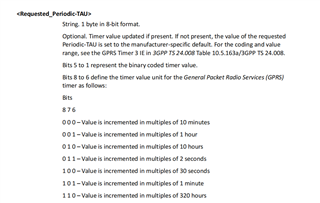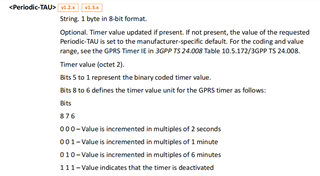I am using 9160 to develop a watch product. During the network test, I found that the description of parameter period tau in CPSMS instruction and xmonitor instruction is different. I want to know which description is correct? Although I know that CPSMS is defined by the terminal by default, xmonitor is obtained by the network.




